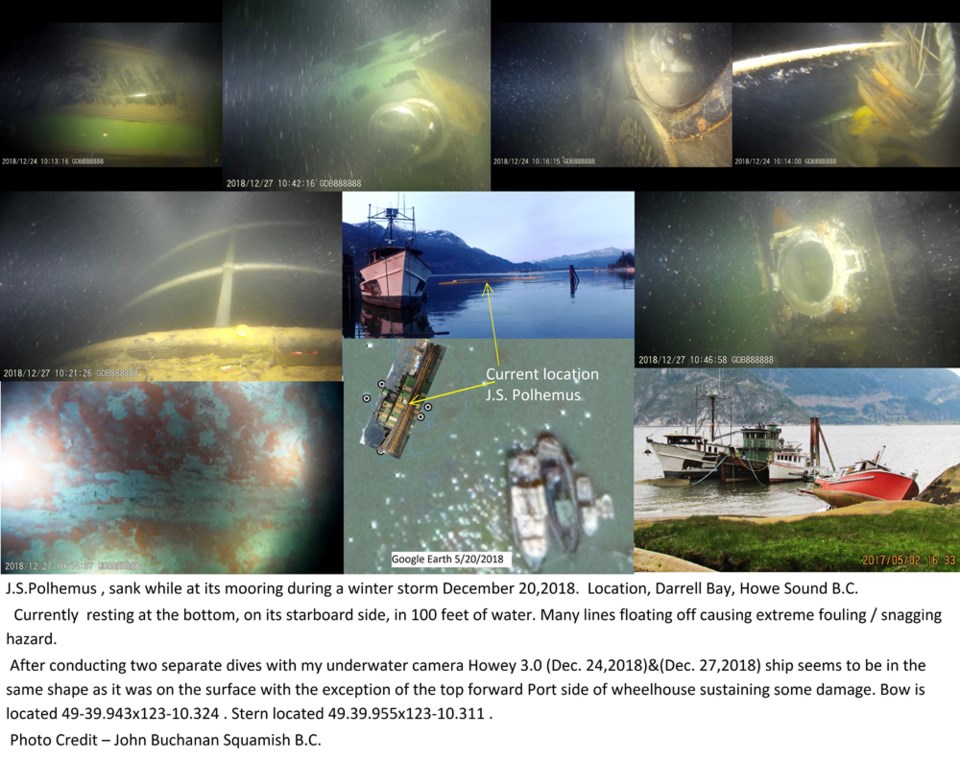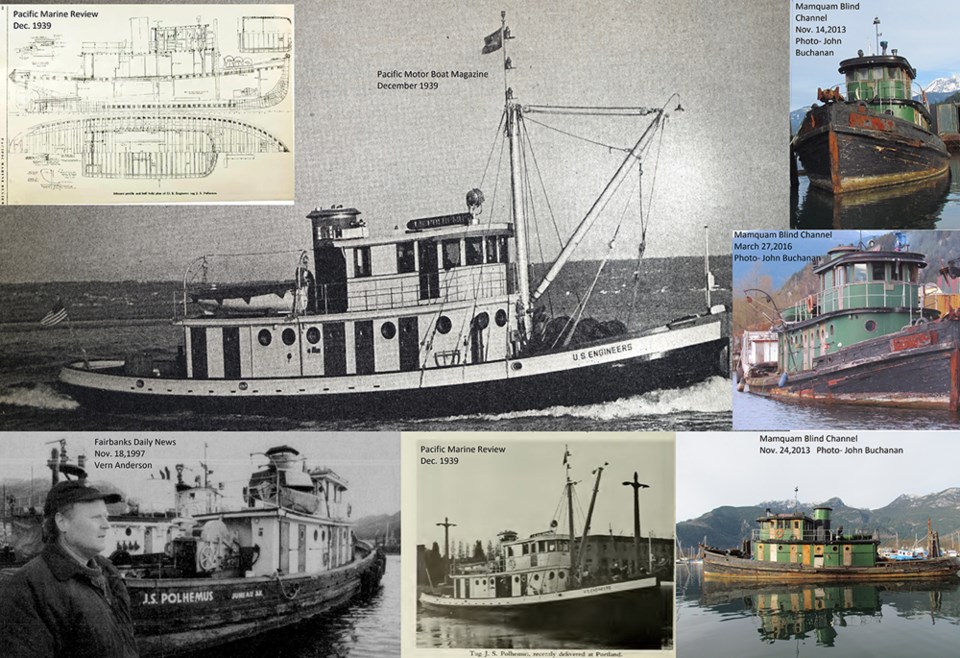There is an obvious environmental impact from the latest string of boats to sink in our area, but I would like to focus on the historical impact as well. All boats have a story to tell and the J.S. Polhemus is no exception.
The J.S. Polhemus was named after James Suydham Polhemus, a U.S. Army Corps engineer born at Astoria N.Y. March 26, 1852. Polhemus earned an engineering degree from Lehigh University, and eventually found himself working for the U.S. Army Corps of Engineers (USACE). He settled in Oregon, where he began work constructing harbour jetties at both Yaquina and Coos Bay, the first of their kind on the Pacific Coast.
The Corps put Polhemus and his family up in the Yaquina Bay lighthouse, which, according to local folklore, was haunted. The family experienced several brushes with death during their stay, including a lightning strike on Nov. 20, 1889, which badly splintered the building and demolished the furniture. Needless to say, they moved to new digs. Polhemus retired from active work on March 25, 1924, after 52 years of continuous government service. He passed away September 29, 1930, at his home in Portland.
His namesake, the J.S. Polhemus, was designed by naval architect O.A. Seigley, built by the Seattle Shipbuilding and Dry-dock Corporation, and delivered Nov. 5, 1939. The boat is 84 feet overall and 23 feet at the beam, with a draft of 6-foot 9 inches forward and 7-foot 9 inches aft. There is 14 by 14-inch Oregon pine in the keel and 2-3/4 inch outside hull planking, using Port Orford cedar above the waterline and fir below.

Power for the tug is provided by a 350 horsepower Enterprise diesel engine. There is a stainless steel shower, full galley, 2,200-gallon fresh water tank, and 2,200 gallons of fuel capacity.
The J.S. Polhemus was even equipped with a radiotelephone. This was the cellphone of its day. If another ship or someone on shore wanted to make contact, he would have looked up J.S. Polhemus call sign, which was “WFYL”.
For the first 27 years, she was owned and worked for the USACE, mostly as a dredge tender in the Columbia River.
On Nov. 5, 1966, the J.S. Polhemus was put up for sale at auction. Jim Cole of Juneau Alaska was the winning bidder and in May 1967 it passed through Juneau bound for Seldovia on the Kenai Peninsula.
In 1969 the J.S. Polhemus was sold to Anderson Tug and Barge Company and for the next 28 years, it was in barge towing service on the West Coast.
Anderson passed away in August 1997 and his son Vern put the now-aging tug up for sale, at an asking price of $80,000. By November, Vern had an interested buyer, a businessman from San Francisco. The new owner planned to strip out the stern machinery, extend the living quarters, downsize the engine, and turn the tug into a private passenger vessel.
The next owner was a person named Toni Kline and by 2004, U.S. Coast Guard records U.S.C.G. ID#508030 show the registered owner as Michael V. Cull. By this time the tug was tied up in the Seattle, Washington area and up for sale again. There was a little online chatter about people coming to look at the boat, but not much else.
Somehow between 2004 and 2018, theJ.S. Polhemus found its way up to Squamish. It now lies on its starboard side, 100 feet under the ocean at Darrell Bay.
The J.S. Polhemus was built during a time when construction materials for tugs were under transition from wood to all welded steel. It represents the best construction techniques of that time and it could have served as a time capsule for future generations, to see firsthand how that was done. The Polhemus could be salvaged, as the water is relatively shallow, but it would have to happen soon and would need someone with deep pockets to restore it to its former glory.
John Buchanan
Squamish




